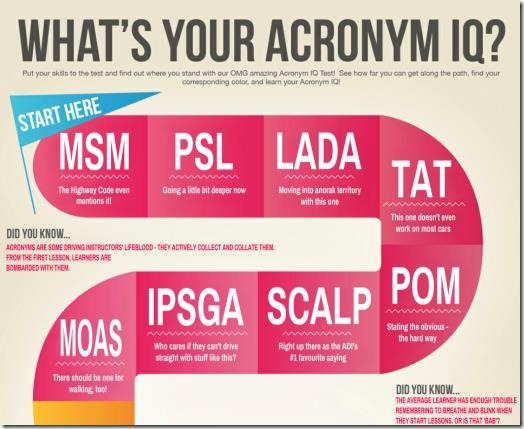
This article was originally published in early 2012 and was based on an even earlier article in which I talked about the most common phrases I seem to use when I’m conducting lessons. That earlier article was somewhat tongue-in-cheek, but my stats tell me that – from time to time – buzzword bingo becomes an important topic for many ADIs out there. We seem to be in one such phase again at the moment.
One of the biggest problems faced by many instructors is their educational background – and getting confused with what is actually required to teach people to drive. I remember when I was doing my Part 3 training, with many lessons of a 2 to 1 nature, hearing ex-miners and labourers trying to talk like Prince Charles (now King Charles, of course) when they were delivering their briefings. They obviously didn’t understand what they were saying – they just thought it needed to sound ‘posh’. It would literally be a case of the blind leading the blind if they tried to teach real pupils.
In spite of all that, people with such backgrounds often become ADIs.
A driving instructor’s job is to teach people to drive to a standard which is good enough to get them through their driving test, and start them off on a lifelong learning curve as they start driving on their own, gaining experience along the way. Nowhere is it written that the training has to be delivered according to Debrett’s.
In a similar vein, if you listened to the Coaching and Lifestyle hawkers out there, you’d be forgiven for thinking that you can’t be an ADI unless you utilise homeopathy, aromatherapy, and psychotherapy in your lessons. It’s all a lot of bollocks, of course, and these people are just scammers after your money (or in some cases, idiots who actually believe the nonsense they peddle). She wasn’t around long, but there was an ADI advertising on the internet about seven years ago who genuinely provided aromatherapy as part of her pink-themed lessons!
Just Say What You Mean
The key to effective communication is to say what you mean and not to worry too much about how you say it. For example, don’t keep using the word “observations” if it is alien to you – and especially don’t use it if it is alien to your pupil. Just say “look all round”, or something that fits in with the local lingo (or a lingo the pupil understands). Use the occasional fancy word by all means, but make sure you define it first. A lot of pupils have a nasty habit of not telling you when they don’t understand something, and that means your message never gets across – even though you might plough ahead thinking it has.
Communication has to lead to understanding, and when it doesn’t the implications can be frightening. Take the Show Me/Tell Me question about testing your brakes. Just imagine what might happen if a pupil passes their test without understanding what ‘spongy or slack’ actually means (and many don’t). It’s far better that they use more familiar words like sloppy, soft, loose, floppy, and so on – the examiner isn’t going to mark them down for it.
Proper communication isn’t just about reading a lesson plan out loud using a flowery dialect you or your pupils are unfamiliar with. Your perceived eloquence has to be as well received as it is delivered.
And Understand What You Say
For God’s sake, don’t say something if you don’t understand it! Keep it simple enough for your pupil – and yourself.
Give Me An A
Some ADIs collect acronyms and sayings as if their lives depended on it. Periodically, one of the forums will light up after someone decides to harvest some new ones and asks for contributions. It’s usually a new ADI who does it, but it is clear that many people absolutely live for the damned things. Unfortunately, most haven’t stopped to consider the effect this has on their pupils. Many learners have enough trouble remembering to put the clutch down when they stop without having to decipher SCALP or whatever brilliant acronym their instructor has pulled from their tickler file for the occasion.
Rigid systems are not the best way to produce safe drivers – all they do is produce people who can follow a rigid pattern under set circumstances. However, if circumstances change they often have no Plan B, and that kind of of driver is probably the most dangerous type on our roads. Acronyms might allow someone to remember what something is – but they do absolutely nothing for understanding.
Personally, I explain MSM-PSL-LADA to my pupils at some point simply because it (the MSM part) is in the Highway Code several times. But not at the beginning of their lessons – only when they’re already doing it later on. The only other times any acronym or silly saying gets discussed is when one of them brings it up, having heard it from a previous instructor or one of their friends. My favourite is the tyres-and-tarmac (TAT) one – which invariably results in at least a 5m gap between us and the car in front (which is far too much), and which inevitably leads to one or two fewer vehicles getting through that annoyingly brisk set of lights during the evening rush hour!
If a Picture Paints a Thousand Words…
…then don’t assume people will want a song and dance, too! I am aware of at least one ADI who considers his singing ability – which isn’t shared by those who have heard it – is worthy of using on driving lessons.
I am an introvert, and if someone performs in front of me – and especially if they try to involve me, or if they are not as good as they think they are – then I usually want to curl up and die. I am intelligent enough to know that at least half of my pupils would be equally uncomfortable having this forced on them. Christ, many of them are uncomfortable even being asked a question! In other words, know how far you can go – don’t go as far as you can, because you (think you) can.
Take The Next Turn…
It’s easy to overlook the importance of clear and unambiguous directions to pupils during lessons (and on their tests). Not doing so is a mistake that all of us will have made at one time or another.
Years ago, not long after I qualified, I was doing a roundabouts session with a pupil. As we sat at traffic lights just before this one particular multi-lane roundabout I was emphasising that she should stay in lane and follow it around to the second exit. She queried it, and I naively said ‘just follow that car in front’. She did, and we negotiated the roundabout perfectly. Yes, I know what could have happened, because half a mile further on it did. She unexpectedly turned off into a side road. When I asked why she’d done it, she replied ‘you said to follow that car’. Rule #1: make sure you cancel an instruction when it is no longer valid – even if you think a later instruction has superseded it. And don’t ask them to follow other cars – they’ll do that often enough without any encouragement.
Much more recently, I had a pupil with an irritating habit of asking where we were going before we got anywhere near a junction. On this particular day I’d asked him to stop it because it was causing confusion. Anyway, we were driving back to his school and, as we got near it, we sailed past the normal turn-off (he’d been routinely driving this route unaided on lessons). I thought he may be taking an alternative route and didn’t say anything, but a little further on – when I realised how far out of our way we were heading – something dawned on me, and I asked: ‘did you deliberately go straight ahead back there because I told you not to keep trying to guess where we’re going?’ He replied: ‘yes’. I wasn’t pleased. Rule #2: pupils can be stupid and childish – don’t make it easier for them to do it.
Some learners are so highly strung that they’re like firecrackers next to an open fire. The slightest spark – even just saying something – can be enough to make them go off with a bang. A few years ago, I had a guy who had social and personal issues. On one lesson we were accelerating on a 40mph road, and I said calmly: ‘now put it into 3rd gear’. I’m not exaggerating, but his hand spread out like a trawling net, and he went first for the handbrake, then the radio, brushed the gear stick, and then attempted to pull something non-existent under the dashboard just to the left of the steering column. Rule #3: pupils can be very unpredictable – be ready for anything.
Allowing for these types of behaviour, the ADI has to be really careful not to make matters worse. Even the best pupils can begin to act on a direction before you’ve finished giving it. Therefore, directions such as ‘turn right at the end of the road’ could quite literally lead you up someone’s garden path (or into a canal). A much better structure is ‘at the end of the road, turn right’. That way, there’s nothing they can act on until you get it all out. For this reason, it makes sense to sit in on a few tests and listen to the way the examiner gives instructions. Also, look up the terminology in the examiners’ SOP (DT1).
Hear, Hear
Most pupils can hear their mobile phone in their handbag when it receives a text message over the sound of the engine, wind, rain, and a full-on rock concert. Indeed, most can hear it vibrate even when it’s switched to silent. But if you say something like: ‘at the roundabout, we’re going straight ahead 2nd exit. Follow the A52 markings towards Nottingham. Stay in the left-hand lane’, what they actually hear is more like: “blahblahblah blahblahblahblah blah blahblahblah blahblahblah blah LEFT blahblah blahblahblah”. Be prepared for the possibility of a James Bond style left turn on two wheels. This gets better over time for most of them, but it is a genuine issue that the ADI needs to be aware of.
On a related note, most pupils – especially the girls – can see a squirrel in a tree three quarters of a mile away and are more than happy to execute an emergency stop to avoid any possibility of harming it. They’re not quite as good when it comes to seeing pedestrians on a crossing just in front of them.
Cut To The Chase
To summarise, you don’t need a whole encyclopaedia of clever sayings and phrases. In all honesty, if that’s what you consider makes someone a good instructor then you’re not going to be around for very long. A good instructor cuts through the crap and gets his or her message across clearly and concisely, and in a way the particular pupil understands (so concentrate more on finding out what vocabulary they have) – and so gets on with the important business of teaching people to drive.


 This article was originally published in 2013, but it’s been popular recently, so I have updated it. I’ve also written a more detailed explanation about
This article was originally published in 2013, but it’s been popular recently, so I have updated it. I’ve also written a more detailed explanation about 








